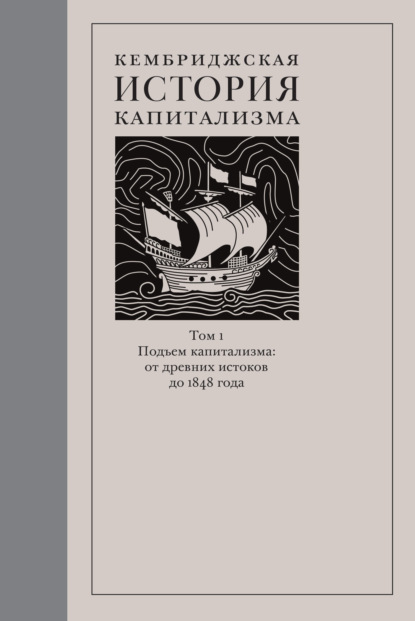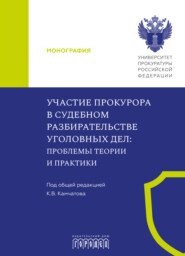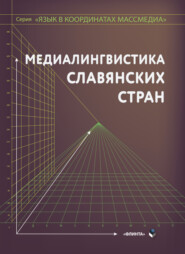По всем вопросам обращайтесь на: info@litportal.ru
(©) 2003-2025.
✖
Кембриджская история капитализма. Том 1. Подъём капитализма: от древних истоков до 1848 года
Настройки чтения
Размер шрифта
Высота строк
Поля
Adams, R. McC. (1981). Heartland of Cities: Surveys of Ancient Settlement and Land Use on the Central Floodplain on the Euphrates. University of Chicago Press.
Andreau, J. et al., eds. (1997). Economie antique. Prix etformation des prix dans les economies antiques. Entretiens d’archeologie et d’histoire 3. Saint-Bertrand-de-Com-minges: Musee Archeologique Departemental.
Attinger, P., W.Sallaberger, and M.Wafler (2004). Anndherungen 4, Mesopotamien. Die altbabylonische Zeit. Orbis Biblicus et Orientalis 160/4. Fribourg and Gottingen: Academic Press/Vandenhoeck and Ruprecht.
Baker, H.D. and M.Jursa, eds. (2005). Approaching the Babylonian Economy: Proceedings of the START Project Symposium Held in Vienna, 1–3 July 2004. AOAT 330. Munster: Ugarit- Verlag.
Bang, P. F. (2006). “Imperial Bazaar: Towards a Comparative Understanding of Markets in the Roman Empire,” in Bang et al. (eds.), pp. 51–88.
–-. (2008). The Roman Bazaar: A Comparative Study of Trade and Markets in a Tributary Empire. Cambridge University Press.
Bang, P. F. et al., eds. (2006). Ancient Economies, Modern Methodologies: Archaeology, Comparative History, Models and Institutions. Bari: Edipuglia.
Beaulieu, P.-A. (2005). “Eanna’s Contribution to the Construction of the North Palace at Babylon,” in Baker and Jursa (eds.), pp. 45–73.
Brinkman, J. A. (1984). “Settlement Surveys and Documentary Evidence: Regional Variation and Secular Trend in Mesopotamian Demography,” Journal of Near Eastern Studies 43: 169–180.
Charpin, D. and F.Joannes, eds. (1991). Marchands, diplomates et empereurs. Etudes sur la civilization mesopotamienne offertes a Paul Garelli. Paris: ERC.
Clancier, Ph. et al., eds. (2005). Autour de Polanyi. Vocabulaires, theories et modalites des echanges. Paris: De Boccard.
Dahl, J. (2010). “A Babylonian Gang of Potters: Reconstructing the Social Organization of Crafts Production in the Late Third Millennium BC Southern Mesopotamia,” in Kogan et al. (eds.), pp. 275–306.
Dandamaev, M. A. (1984). Slavery in Babylonia from Nabopolassar to Alexander the Great (626–331 BC). DeKalb, IL: Northern Illinois University Press.
Dercksen, J. G. (2004). Old Assyrian Institutions. Leiden: Nerderlands Instituut voor net Nabije Oasten (NINO).
Diakonoff, I.M., ed. (1982). Societies and Languages of the Ancient Near East: Studies in Honour of I. M. Diakonoff. Warminster: Aris and Phillips.
Driel, G. van (2002). Elusive Silver: In Search of a Rolefor a Market in an Agrarian Environment. Aspects of Mesopotamia's Society. Leiden: NINO.
Eidem, J. (1991). “An Old Assyrian Treaty from Tell Leilan,” in Charpin and Joannes (eds.), pp. 185–207.
Garfinkle, S. J. (2012). Entrepreneurs and Enterprise in Early Mesopotamia: A Study of Three Archives from the Third Dynasty of Ur (2112–2004 BCE). Bethesda, MA: CDL Press.
Goldstone, J. (2002). “Efflorescences and Economic Growth in World History: Rethinking the ‘Rise of the West’ and the Industrial Revolution,” Journal of World History 13: 323–389.
Graslin-Thome, L. (2009). Les echanges a longue distance en Mesopotamie au ler millenai-re. Une approche economique. Paris: De Boccard.
Hatcher, J. and M. Bailey (2001). Modelling the Middle Ages: The History and Theory of England's Economic Development. Oxford University Press.
Hausleiter, A. et al., eds. (2002). Material Culture and Mental Spheres. Rezeption archao-logischer Denkrichtungen in der Vorderasiatischen Altertumskunde. Internationales Symposium fur Hans J. Nissen, Berlin, 23.-24. Juni 2000. AOAT 293. Munster: Ugarit-Verlag.
Hilgert, M., ed. (2011). Altorientalistik im 21. Jahrhundert: Selbstverstandnis, Herausfor-derungen, Ziele. Mitteilungen der Deutschen Orient-Gesellschaft 142(2010). Deutsche Orient- Gesellschaft zu Berlin.
Jursa, M. (2002). Prywatyzacja i zysk? Przedsfebiorcy a gospodarka instytucjonalna w Mezopotamii od 3 do 1 tysiq clecia przed Chr [Polish: Privatization and Profit? Entrepreneurs and Institutional Households in Mesopotamia from the Third to the First Millennium BC]. Poznan: Poznanskie Towarzystwo Przyjaciol Nauk.
–-. (2005). Neo-Babylonian Legal and Administrative Documents: Typology, Contents and Archives. Guides to the Mesopotamian Textual Record 1. Munster: Uga-rit-Verlag.
–-. (2010a). Aspects of the Economic History of Babylonia in the First Millennium BC: Economic Geography, Economic Mentalities, Agriculture, the Use of Money and the Problem of Economic Growth. With contributions by J. Hackl, B.Janko-vic, K. Kleber, E. E. Payne, C. Waerzeggers, and M. Weszeli. AOAT 377. Munster: Ugarit-Verlag.
–-. (2010b). “Business Companies in Babylonia in the First Millennium BC: Structure, Economic Strategies, Social Setting,” in Wissa (ed.), pp. 53–68.
–-. (2011). “Steuer. D. Spatbabylonisch,” Reallexikon der Assyriologie 13 (1/2): 168–175.
–-. (in press a). “Factor Markets in Babylonia from the Late Seventh to Fourth Century BC,” Journal of the Economic and Social History of the Orient.
–-. (in press b). “Market Performance and Market Integration in Babylonia in the ‘Long Sixth Century’ BC,” in van der Spek et al. (eds.).
Kogan, L. et al., eds. (2010). City Administration in the Ancient Near East: Proceedings of the 53rd Rencontre Assyriologique Internationale, vol. II. Winona Lake, IN: Eisenbrauns.
Landes, D. S., J. Mokyr, and W. J. Baumol, eds. (2010). The Invention of Enterprise: Entrepreneurship from Ancient Mesopotamia to Modern Times. Princeton University Press. Larsen, M. T. (1982). “Your Money or Your Life! A Portrait of an Assyrian Businessman,” in Diakonoff (ed.), pp. 214–245.
Leeuwen, B. van and R. Pirngruber (2011). “Markets in Pre-Industrial Societies: Storage in Hellenistic Babylonia in the Medieval English Mirror,” Journal of Global History 6: 169–193.
Leick, G., ed. (2007). The Babylonian World. London and New York: Routledge. Liver-ani, M. (1998). Uruk la prima citta. Roma and Bari: Laterza.
(2011). Antico Oriente. Storia societa economia. Rome and Bari: Laterza. Manning, J. G. and I. Morris, eds. (2005). The Ancient Economy: Evidence and Models. Stanford University Press.
Matthews, R. (2003). The Archaeology of Mesopotamia: Theories and Approaches. London and New York: Routledge.
Morris, I. (2004). “Economic Growth in Ancient Greece,” Journal of Institutional and Theoretical Economics 160: 709–742.
–-. (2005). “Archaeology, Standards of Living, and Greek Economic History,” in Manning and Morris, pp. 91-126.
Pamuk, ?., and M. Shatzmiller (2014). “Plagues, Wages and Economic Change in the Islamic Middle East, 700-1500,” Journal of Economic History, 74.
Pirngruber, R. (2012). “The Impact of Empire on Market Prices in Babylon in the Late Achaemenid and Seleucid periods, ca. 400–140 B.C.” Ph.D. Thesis Vrije Uni-versiteit Amsterdam.
Postgate, J. N. (1994). Early Mesopotamia: Society and Economy at the Dawn of History, 2nd edn. London and New York: Routledge.
Potts, D. T. (1997). Mesopotamian Civilization: The Material Foundations. London: Ath-lone Press.
Powell, M. (1994). “Elusive Eden: Private Property at the Dawn of History,” Journal of Cuneiform Studies 46: 99-104.
Radner, K. and E. Robson, eds. (2011). The Oxford Handbook of Cuneiform Culture. Oxford University Press.
Rathbone, D. (1997). “Prices and Price Formation in Roman Egypt,” in Andreau et al. (eds.), pp. 183–244.
Renger, J. (2002). “Wirtschaftsgeschichte des alten Mesopotamien. Versuch einer Standortbestimmung,” in Hausleiter et al. (eds.), pp. 239–265.
–-. (2003). “Oikos, Oikoswirtschaft,” Reallexikon der Assyriologie, 10 (1/2): 43–45.
–-. (2004). “Palastwirtschaft,” Reallexikon der Assyriologie, 10 (3/4): 276–280.
–-. (2005). “K.Polanyi and the Economy of Ancient Mesopotamia,” in Clancier et al. (eds.), pp. 45–65.
–-. (2007). “Economy of Ancient Mesopotamia: A General Outline,” in Leick (ed.), pp. 187–197.

















